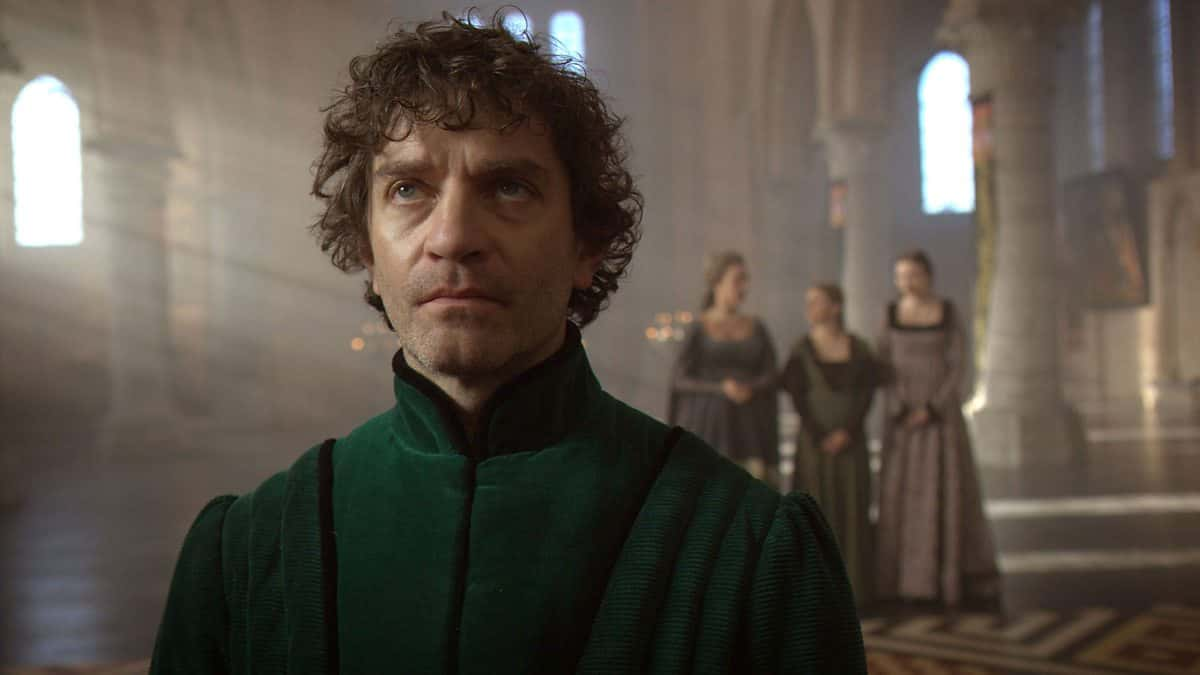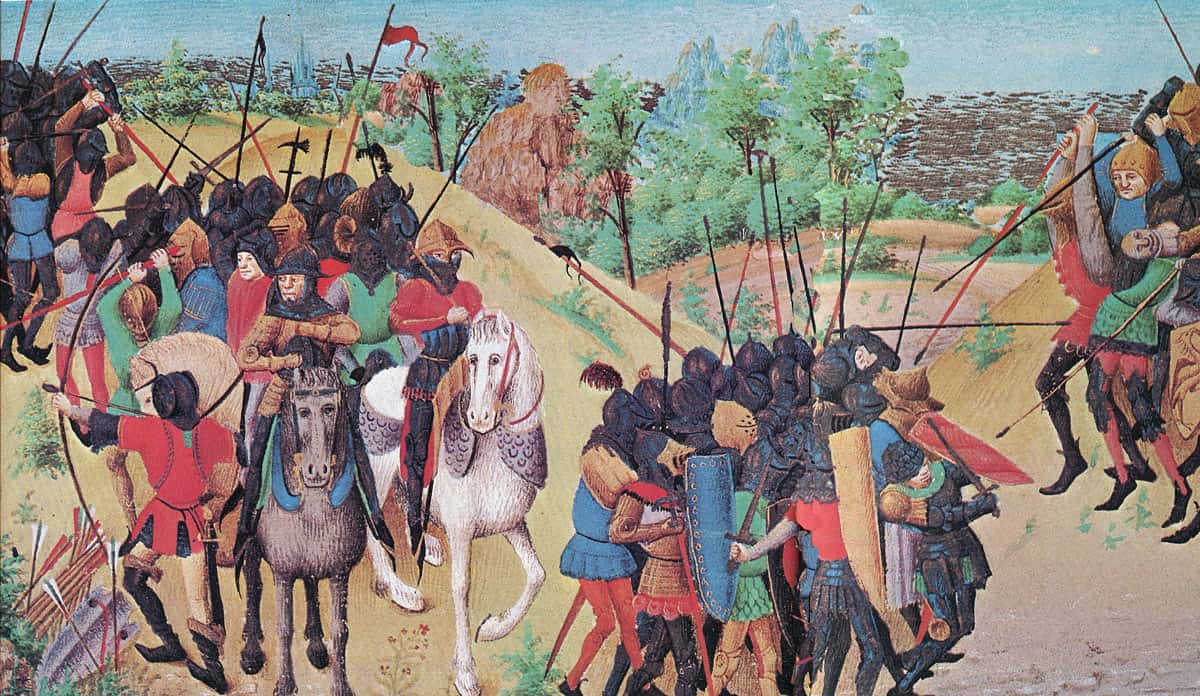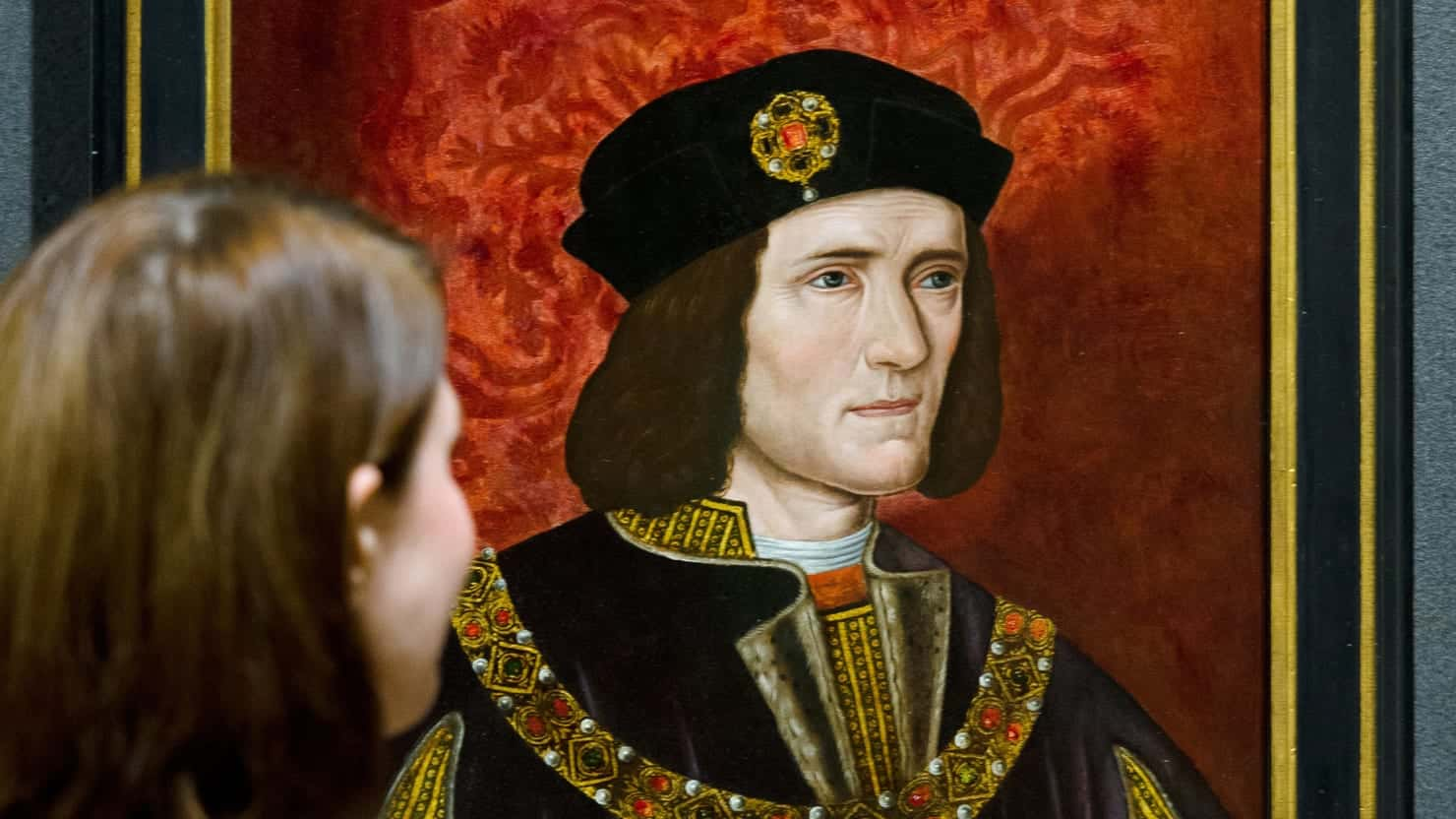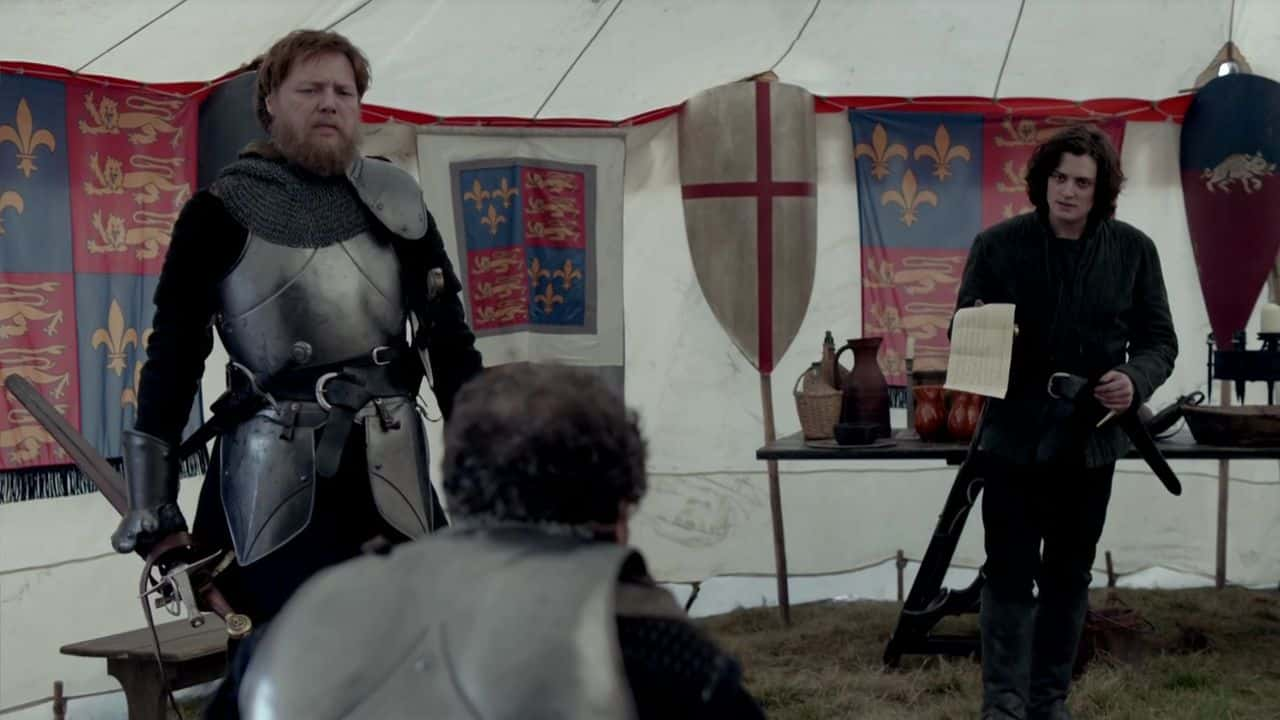"When you play the game of thrones, you win or you die."—George RR Martin
The Wars of the Roses were one of the main inspirations behind A Song of Ice and Fire, and later for Game of Thrones. It was a deeply personal, vicious conflict which swept England as men fought, and died, for the throne. It was a time of political intrigue, shocking betrayals, and bloody battles. These 43 facts will cover this grim period in England's history, in all its glory and in its darkest hours.
Wars Of The Roses Facts
43. Family Feud
The Wars of the Roses was a civil war of the nobility. The Plantagenet dynasty, after having ruled for centuries, split into two main factions, the House of Lancaster, and the House of York, who were symbolized by a red and a white rose, respectively. For decades, these two families played a deadly game for the English throne.
42. It Started with Edward III
When King Edward III died in 1377, the groundwork was laid for what would eventually become the Wars of the Roses. He had lost his eldest son and heir, Edward the Black Prince, just a year before his own death, leaving the succession in a crisis. Despite Edward III having four more legitimate sons, the crown went to the Black Prince’s 10-year-old son, Richard II, while a condition was set that if Richard died without any heirs, the throne would pass to the family of his uncle, John of Gaunt. Of course it couldn't have been simple.
41. Call it a Vote of No Confidence
By 1399, Richard II was so unpopular amongst his nobles that he was deposed in favor of John of Gaunt’s son, the Duke of Lancaster, Henry of Bolingbroke (as Shakespeare fans will know very well). The House of Lancaster became Kings of England through this Henry, who became known as Henry IV, and his son, Henry V.
40. In This Corner: York
King Edward III had more sons than the Black Prince and John of Gaunt, and they were not to be forgotten. Edmund of Langley became the Duke of York in 1385. His son, the Earl of Cambridge, married into the Mortimer family, a powerful branch of the nobility on the Welsh Marches (at the border between England and Wales). The Earl of Cambridge was found guilty of conspiring against the Crown and executed for treason in 1415 on the orders of Henry V. However, Henry mercifully allowed Cambridge’s four-year-old son to inherit his grandfather’s title, the dukedom of York. This four-year-old was named Richard, and no doubt Henry V would have regretted sparing the boy if he knew what would happen years later.
39. A Mad King
In 1422, Henry V died at the young age of 36, just before he had nearly conquered France and won the Hundred Years War. This left his son, a squalling infant, to become King Henry VI. Regents came and went, advisors furthered their own ambitions, and Henry VI grew into a weak king prone to mental breakdowns and even periods of insanity, if historical records can be trusted. Some have suggested that he was an undiagnosed schizophrenic, but that’s just guesswork at this point.
38. Maybe He Should Get the Throne?
Richard of York, whom Henry V had shown mercy all those years ago, had meanwhile grown into the wealthiest noble in England. He also had seven children: Anne, Edward, Edmund, Elizabeth, Margaret, George, and Richard. Due to his Plantagenet ancestry, many began to see Richard as a potential replacement for Henry VI as king.
 Farfara way site
Farfara way site
37. Oh Yeah, That War We’re Fighting…
At this time, the Hundred Years War was still being fought with France, and things were turning against the English. This drained the kingdom of resources and manpower. Henry’s ill health and state of mind also meant the weak monarchy did little to stop the feuding nobles from engaging in their own conflicts. Richard of York began to represent the group of nobles who thought the war needed to be fought more aggressively to turn the tide back in their favor.
36. A Gathering Storm
Henry VI suffered the first of several mental breakdowns in 1453, leading the nobles to form a small council of Regency (the Game of Thrones similarities never cease). Despite his feuds with many Lancastrians, the Duke of York was popular with the people, and he was chosen to become Lord Protector. While there’s no proof that he was planning to take the kingship for himself at that point, his authority infuriated Henry VI’s wife, the highly intelligent Queen Margaret of Anjou. She collected Lancastrian allies and eventually forced Richard out of the royal court. Fearing that arrest was coming, Richard of York called his banners, as it were.
35. First Blood
The first battle of the Wars of the Roses was fought on the 22nd of May 1455. Richard, the Duke of York, met King Henry VI at the First Battle of St. Albans. With the help of his allies, the Earls of Salisbury and Warwick, Richard easily defeated Henry VI’s forces, and even took the King captive. Afterward, Richard was once again named Lord Protector.


History's most fascinating stories and darkest secrets, delivered to your inbox daily.
34. Let’s All Calm Down, Okay? Okay?
Surprisingly, this battle seemed to sober everyone up for a while, as they tried to restore order before things got out of hand. But as the years passed, things became tense again as Queen Margaret introduced conscription for the first time in English history. Richard of York was stationed in Ireland, and his ally, the Earl of Warwick became popular among the English merchants due to his financial support.
33. Let’s Play a Game of Musical Thrones
In 1459, Richard of York, Warwick, and their allies were summoned to court by Queen Margaret and her Lancastrians. Fearing a trap, York gathered his friends and chose open war instead. However, due to a betrayal by Andrew Trollope, the Yorkists lost the Battle of Ludford Bridge. As they fled in all directions, the victorious Lancastrians attainted them, but later, at the Battle of Northampton, a betrayal in the Lancastrian army resulted in the Yorkists winning. It was after this that Richard began to press his claims for the title of King.
32. Richard’s Rebellion
York made a deal with Henry VI that kept Henry as monarch but disinherited his son Edward, to make way for Richard to be his heir instead. But neither of them counted on Henry’s wife, Margaret of Anjou, who wouldn't let her son's claim to the throne evaporate that easily. She gathered loyalists to her cause, raised an army, and in 1460, the Lancastrians met the Yorkists at the Battle of Wakefield.
31. The Fall of York
According to the histories, Andrew Trollope reached out to Richard of York prior to the battle. He claimed he would defect to the Yorkist cause again, which prompted York to engage his enemies. However, Trollope had lied, and the Lancastrians won the battle handily. In the aftermath, York’s brother-in-law, the Earl of Salisbury, was killed, as was York’s 17-year-old son, Edmund, the Earl of Rutland. According to one source, Richard was taken alive, mocked by his enemies, and executed, though he may have been simply killed in battle. Their heads were placed on pikes overlooking the city of York. To add insult to injury, the Lancastrians put a paper crown on Richard of York’s head.
30. That Makes Us Mad!
Rather than ending the war, the killing of Richard of York and his second son only made things more serious. York’s surviving sons took up the Yorkist cause. In an event that was immortalized by Shakespeare’s account of the history, Edward of York rallied his allies with a vision of three suns on the horizon (this is an actual phenomenon known as a parhelion or "sun dog"). The three suns, Edward claimed, represented the three surviving sons of York (himself, Richard, and George).
29. The Queen of Blood
It's indisputable that Margaret of Anjou was the driving force behind the Lancastrian cause. Margaret was the one organizing armies and constantly saving her helpless husband from being captured or abandoned. However, she may have gotten a bit too enthusiastic in her cause. In a famous incident, Margaret asked her seven-year-old son how she should put their Yorkist prisoners to death. As proof that bloodthirstiness is genetic, Edward happily replied that they should have their heads cut off.
 Pinterest
Pinterest
28. A Traitor’s Reward
Andrew Trollope, war veteran and turncoat, would eventually be knighted after the Second Battle at St. Albans turned into a Lancaster victory. Henry VI commanded his young son to knight Trollope, despite the fact that his participation in the battle had been stalled by his stepping on a spike driven into the ground to stop charging horses. Despite literally being nailed to the ground, Trollope continued to fight; according to legend, he lamented that he could only kill 15 Yorkists that day, because he had to rely on them coming to him for battle. We can only imagine the laughs he got from the people around him with a zinger like that.
27. A Clash of Kings
By 1461, Edward of York had rallied the Yorkists and taken them to London, where Warwick crowned Edward of York as King Edward IV. However, despite the Yorkists' confidence, the Lancastrians had been looting the countryside and were still very much a serious threat. Edward IV and his allies fought Sir Andrew Trollope, the Earl of Northumberland, the Earl of Devon, and the Duke of Somerset at the Battle of Towton. Henry and Margaret, however, decided to stay in York.
 Pinterest
Pinterest
26. A Storm of Swords
The Battle of Towton was not only the biggest battle of in all the Wars of the Roses, it was also the biggest battle ever fought on English soil. More than 50,000 men met on the field. At first, Edward and his forces were outnumbered, but they realized that the wind was blowing in their favor, literally. This meant that the Lancaster longbows were outranged by the Yorkist arrows. In the middle of the hand-to-hand fighting, reinforcements from the Duke of Norfolk sealed the day for Edward IV. Trollope and Northumberland were killed in the battle, while the Earl of Devon was executed shortly afterwards.
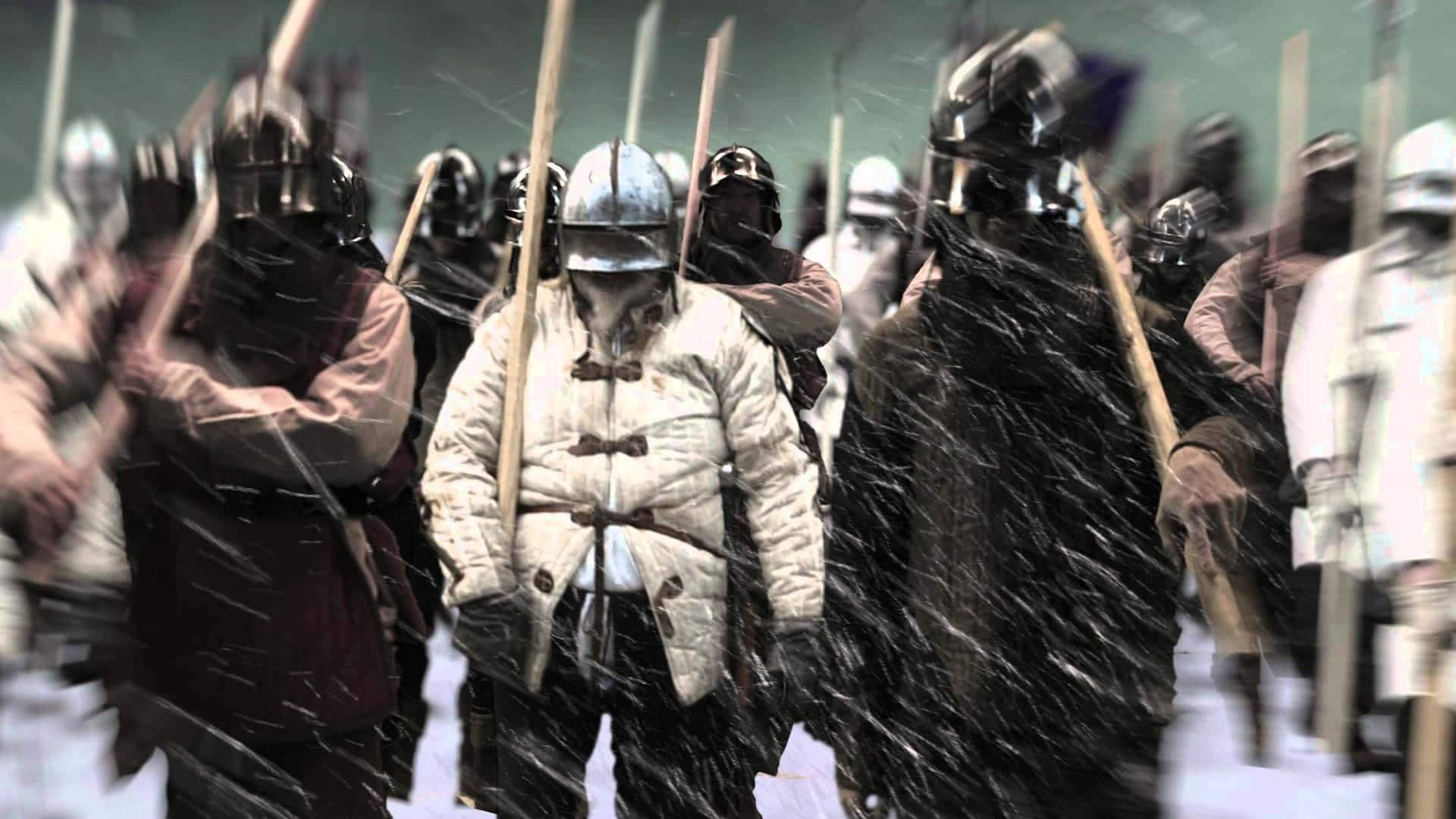 Youtube
Youtube
25. High Body Count
The Battle of Towton lasted upwards of ten hours, and by the end of it, the Lancastrians turned and fled. This only made them vulnerable to slaughter, because everybody was done with acting chivalrous by that point in the war. Allegedly, the 28,000 casualties caused the nearby river to run red with blood for days after the battle. Henry and his family went on the run, and the Lancastrians wouldn’t seriously threaten Edward IV again until 1470, nine years later.

24. You Did What?!
The Earl of Warwick took a leading role in the monarchy with Edward IV’s ascension, but things would take a turn for the worse when Edward IV fell in love with and secretly married Elizabeth Woodville, the widow of a Lancastrian knight. Warwick had been busy negotiating a political wedding with a French bride for his king, and this put him in a very awkward position when Edward introduced the world to his new Queen (Robb Stark anyone?).
23. Free-For-All
Edward IV wore out his welcome during the rest of the 1460s due to high taxes and the unresolved conflicts between Lancaster and York. Not only that, Edward alienated his brothers, Duke Richard of Gloucester and Duke George of Clarence. Warwick and Clarence made an alliance and Edward IV was briefly imprisoned by his former allies.
22. Chaos is a Ladder
Richard Neville, better known as the Earl of Warwick, was famously known as the Kingmaker for his actions in deposing two kings during the Wars of the Roses. He was the wealthiest and most powerful man in England, with his little fingers seemingly in every pie the conflict had to offer. He would end up fighting on all sides before his death in battle, supporting whichever faction furthered his own advancement.
21. Misleading Name?
Ironically, the people of the county of Yorkshire were not on the Yorkist side during the Wars of the Roses. They were mostly Lancastrians, though we can only imagine how suspicious their allies were when a Yorkshireman had to admit what county he came from.
 Pinterest
Pinterest
20. O Brother My Brother
Edward IV managed to get the upper hand again after the debacle of 1469, and the civil war erupted once more as Warwick threw his lot in with the Lancasters. George of Clarence, however, went back to his brother’s side, and Edward IV managed to defeat Warwick at the Battle of Barnet in 1471.
19. Final Battle
The final nail in the Lancaster coffin was the Battle of Tewkesbury, which happened on the 4th of May 1471. Around 5,000 men were led by the 29-year-old Edward IV and his 18-year-old brother, Richard of Gloucester. George of Clarence had reconciled with his brothers, and the three sons of York stood strong against 6,000 Lancastrians led by Margaret of Anjou, her 17-year-old son Edward the Prince of Wales, and the Duke of Somerset.
18. Edward vs Edward
The Battle of Tewkesbury was a huge success for the Yorkists and ensured Edward IV’s status as King of England. The Duke of Somerset was executed after the battle and Margaret of Anjou was imprisoned, broken in spirit by her son’s death. Sources aren’t completely clear on whether the Prince of Wales died in battle (which means he would be the only one ever to suffer that fate) or afterwards. One source claimed that Prince Edward was found after the battle by George of Clarence and was executed while pleading for mercy. Several Tudor sources later claimed that the Prince had been presented to Edward IV and was stabbed to death by George and Richard in revenge for their father and brother. Shakespeare later added the detail that Margaret of Anjou was forced to watch her son’s butchering as a fitting revenge for her cruelty towards Richard of York.
17. From Prince to Another
Anne Neville, the daughter of the Earl of Warwick, had been married to Prince Edward, son of Henry VI. After his death, Neville went on to marry Richard of Gloucester, whose family had been the ones to put her first husband to death (awkward much?). Not only that, Robert had also helped defeat and kill her father. All of this had been done despite the fact that the Nevilles were cousins of the York family. We can only imagine what Anne Neville’s therapy sessions would have been like.
16. Let Me Guess, He Died of a Broken Heart?
With the death of Prince Edward and the annihilation of his family, the once-again-imprisoned Henry VI was no longer useful (he had been kept alive by Edward IV to prevent his son from being crowned and rallying more support). Sources are unclear as to who was responsible for Henry’s death, but despite Edward IV’s insistence that Henry died of melancholy, he was hardly ever believed, then or since.
15. Amber Alert Needed
Edward IV’s rule was finally secure, and aside from his treacherous brother George, who was executed in 1478 for stirring up trouble again, his family and friends were loyal to him. Upon his death, in 1483, he named his brother, Richard, as Protector of England until his own sons came of age. However, Richard was soon crowned as King Richard III. As for Edward’s sons, they were infamously kept in the Tower of London, before finally disappearing completely.
14. The Princes in the Tower
Edward and Richard, whose only crime was having the most unoriginal names ever, formed an infamous legend which hangs around the memory of Richard III, becoming known as "The Princes in the Tower." No one knows exactly what happened to them, nor how responsible Richard III was for their deaths. However, it haunted Richard’s memory after his death, as well as his reign in life. Several pretenders arose claiming to be one of the two missing princes. None of them were convincing enough for history to believe them, however.
13. Someone Call Maury
Whatever happened to his two nephews, Richard III justified his taking the throne by declaring that Edward IV’s marriage to Elizabeth Woodville had not been official. This meant that their sons were illegitimate, and that the title to the throne was vacant. This actually managed to convince everyone, and he was crowned king.
12. The Queen in Exile
Margaret of Anjou, surviving her husband and son, lived out her last seven years as an exile in her native France before her death in 1482. She would call herself Queen until her dying day, despite holding no power and living on the charity of the French royalty. No doubt things might have been different if she’d been given a golden-haired twin brother to have helped her out in the war, but that just sounds like a pipe dream.
11. He Looks Like an Imp!
Richard III has gone down in history as being one of the most vilified English kings that’s ever lived. Nearly all the sources portray him as a malformed, ugly person, but given that the winners were writing history, we can only guess at how true these descriptions were. One of the few things confirmed about him, thanks to the discovery of his grave under a parking lot, it was confirmed that Richard III did suffer from scoliosis of the spine. Turns out that Shakespeare got some things right after all!
10. A New Challenger
While all this was going on, another branch of the family made itself known. Descended from John of Gaunt, the Duke of Lancaster, Margaret Beaufort had married the Welsh Earl of Richmond, who also went by the name of Edmund Tudor. With this tentative connection to the Lancastrians, their son, Henry Tudor, would become a beacon for Richard III’s enemies.
9. Final Showdown at Bosworth
The true end of the Wars of the Roses came about at the battle which was initially called Redemore, but which became known as the Battle of Bosworth Field 25 years after it was fought. King Richard III had alienated many of his subjects, and some turned to the exiled noble Henry Tudor. Related distantly to the Lancasters, Tudor invaded England in 1485. At Bosworth Field, Richard III was defeated and killed, ending the rule of York. After all that!
8. A Sign of Things to Come
The Battle of Bosworth Field was one of the very first times that handguns were used on the battlefield. As inaccurate as they tended to be in those days, they were good at frightening horses, and improved technology meant that they would later replace the English longbow.
7. Army v. Army v. Army
Aside from the forces led by Richard III and Henry Tudor, a third army was at Bosworth Field, led by Lord Thomas Stanley and Sir William Stanley. The Stanley brothers famously had their feet in both the Lancastrian and Yorkist camps, so Richard was naturally wary of Lord Stanley, taking his son as a hostage before the battle to ensure his good behavior. However, that didn’t stop the Stanleys from staying out of the fight until they saw a chance to turn the tide. They took Richard’s forces by surprise, driving many into the marsh and surrounding Richard himself as he made his last stand.
6. My Kingdom for a Horse? What a Terrible Bargain!
Allegedly, contrary to what Shakespeare had to say about the matter, Richard III actually did have the chance to flee the battle before he died. However, he refused the idea of retreating, and insisted that he would either win or die as a king. Historical accounts, even the ones written by those who hated Richard, acknowledged that the “feeble” and “small” Richard nevertheless fought bravely and gallantly, even felling the 6'8" tall Sir John Cheney before he was eventually killed.
5. Painful Way to Die
Richard III remains the last English king to have died in battle, and by all accounts, it wasn’t a pretty end. Based on the injuries to his body, historians have theorized that Richard III was killed by a halberd blow to his head. There were a total of eleven wounds to his body, some of which may have been inflicted post-mortem.
4. Settle it Once and… Temporarily!
Henry VII began the Tudor dynasty, ending the conflict by marrying Edward IV’s daughter, Elizabeth of York. He also took the red and white roses of the two rival dynasties and merged them to form the Tudor Rose as a final compromise. Of course, it didn’t work, and Henry VII spent a good portion of his reign putting down rebellions and pretenders to the throne.
3. If You Can’t Play Nicely with Power…
One of the biggest impacts that the Wars of the Roses had on Medieval England was the tighter grip that monarchs would impose on the nobility, given how much betrayal and troublemaking had gone on. Henry VII and his children would embody the idea of absolute monarchy, to the point where Henry VII’s son, the iconic Henry VIII, would not only rule as England’s king, but also as the head of its Church.
2. Hey, This Reminds Me of Something!
Yes, the not-so-subtle hints we’ve been dropping throughout this article were not accidental or unplanned. George RR Martin used the Wars of the Roses as a major source of inspiration for his own epic novel series A Song of Ice and Fire. Lancaster vs. York, the banished noble coming back to reclaim the throne from a hated ruler, princes disappearing and presumed dead, marcher lords, all of it will no doubt ring bells louder than the ones announcing the death of [spoilers]. Though frankly, we can only breathe a sigh of relief that neither the Lancasters or Yorks ever got their hands on dragons.
1. Using the Wrong Name the Whole Time!
Surprisingly, the warring factions of the Wars of the Roses weren’t defined by the roses they carried on their banners! The House of York used several symbols, not just the white rose. The Lancastrians, meanwhile, didn’t adopt the red rose until the 1480s, when the conflict was finally dying down. It wasn’t until people like Shakespeare popularized the legend that it was taken as fact. At the time it was being fought, the conflict was known as the Cousins’ War, given the family ties of York and Lancaster.
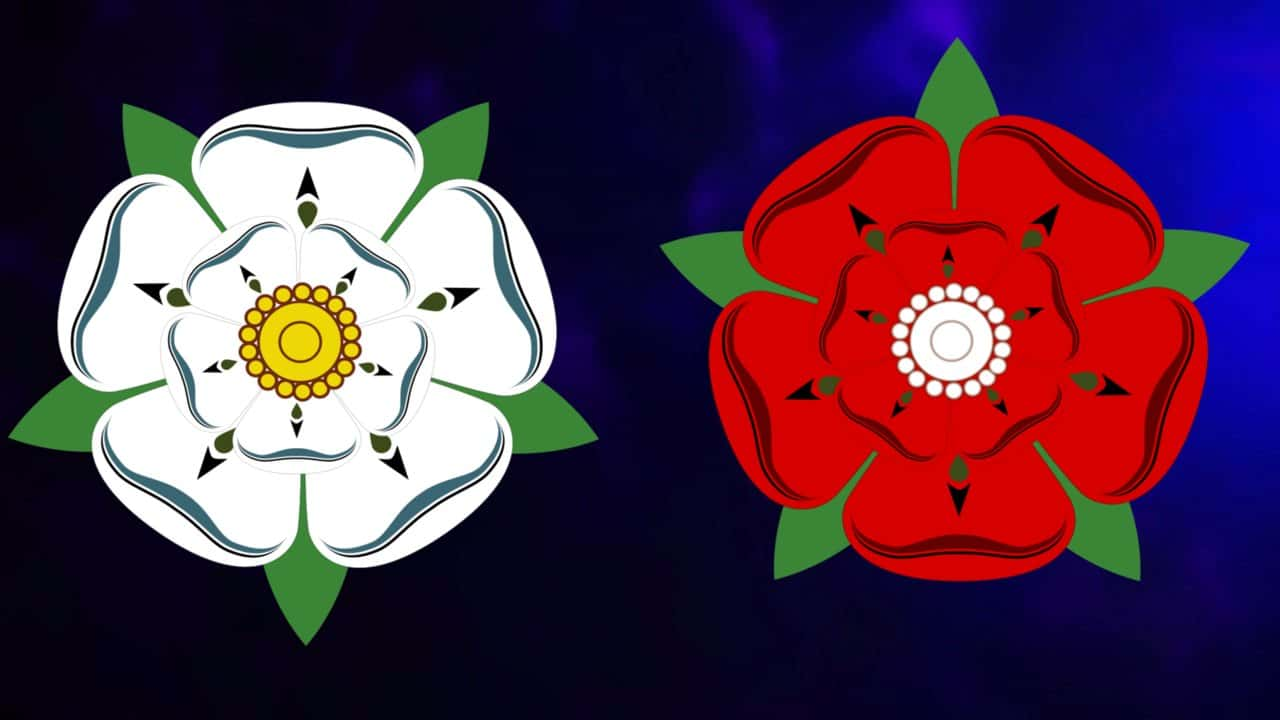
Sources: 1, 2, 3, 4, 5, 6, 7, 8, 9, 10, 11, 12, 13, 14, 15, 16, 17, 18, 19, 20

















